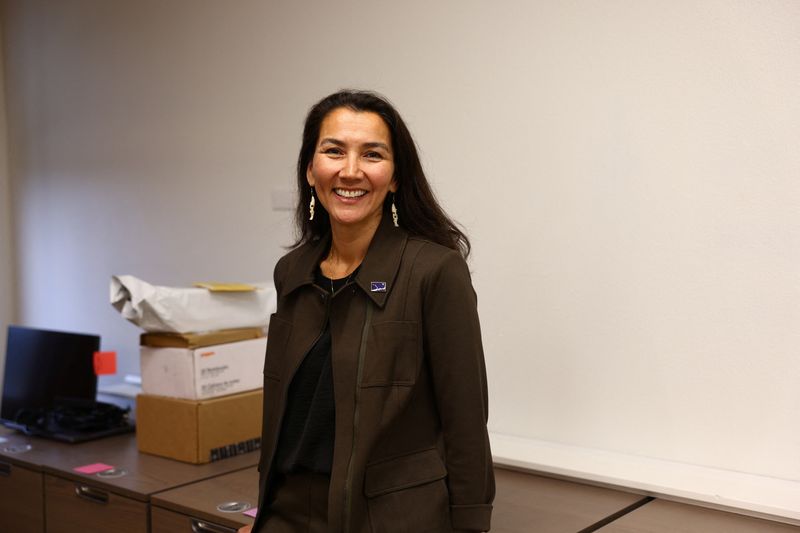Explainer-How Alaska’s new voting system helped deliver historic win for U.S. Democrats
2022.09.01 22:38
2/2

Democrat Mary Peltola, pictured at a temporary office space in downtown Anchorage, Alaska, hours after results showed her to be the apparent winner in Alaska’s special U.S. House election, August 31, 2022. REUTERS/Kerry Tasker
2/2
By Moira Warburton
WASHINGTON (Reuters) – For the first time since 1972, Alaska is sending a Democrat to occupy its only seat in the U.S. House of Representatives through a new ranked voting ballot, the state’s division of elections announced on Thursday.
Mary Peltola has made history by becoming the first Alaska Native to represent the state in Congress. She defeated Sarah Palin, a former Republican governor who burst onto the national political scene in 2008 as a colorful vice presidential candidate.
Here is how ranked ballots work in Alaska, along with the election results.
WHO WON IN ALASKA’S FIRST RANKED CHOICE VOTING ELECTION?
Mary Peltola, a former state lawmaker and the first Alaska Native to represent the state, beat former governor and Republican vice presidential candidate Sarah Palin through a ranked choice ballot, a first for Alaska.
Peltola could have won through a simple plurality. After the first round of counting she had 39.7% of the vote, compared with Palin’s 30.9% and Nick Begich III, a Republican businessman, who got 27.8%.
But under the new ranked choice voting system the winner must get over 50% of the vote, so ballots that ranked Begich first were redistributed according to their second choice.
Even though the majority of Begich’s voters ranked Palin as their second choice, enough of them put Peltola as second to put her over the margin of victory.
WHO IS MARY PELTOLA?
Peltola was raised in Bethel, Alaska, a fly-in community roughly 400 miles (640 km) west of Anchorage, the state capital. She served as a state lawmaker for 10 years from the age of 24, becoming friends with Palin, who at the time was also a young, pregnant representative far from home, Alaska Public Media reported.
She is a Yup’ik Eskimo. Alaska’s population is almost 20% Indigenous, the highest proportion of any U.S. state.
During the campaign she identified herself as “the only candidate in this race who isn’t a multimillionaire,” emphasizing her rural roots and record of bipartisan achievement during her time in the Alaska legislature.
She will serve out the remainder of Republican Representative Don Young’s term to the end of the year after his death in March at the age of 88, and face reelection on Nov. 8.
WHAT IS ALASKA’S NEW VOTING SYSTEM?
Most of the United States, Canada, Britain and many other democracies around the world use a “first-past-the-post” voting system, where voters choose one candidate on a ballot and the candidate with a plurality of votes wins.
In 2020, Alaskan voters approved a new system known as ranked choice voting, where they number candidates on a ballot in order of preference. In each round of counting, the candidate with the lowest share of votes is eliminated and the ballots which ranked them first are then redistributed. The candidate with a majority of votes after all ballots have been counted wins.
WHY USE RANKED CHOICE VOTING?
Proponents say the system allows voters to have a meaningful say in the results even if their first-choice candidate is eliminated, and decreases polarization because politicians are incentivized to appeal to voters outside of their bases.
“You can no longer just use your old playbook – you know, reach out to the base, make sure they get out to vote. You have to think differently,” said Jason Grenn, executive director of Alaskans for Better Elections, a nonprofit that advocates ranked choice voting.
“How do you find common ground with voters when you’re going to have to need their second or their third choice on your ballot in order to win?”
Ranked choice is used in Maine for all elections and the cities of San Francisco and New York for local elections, among others.








